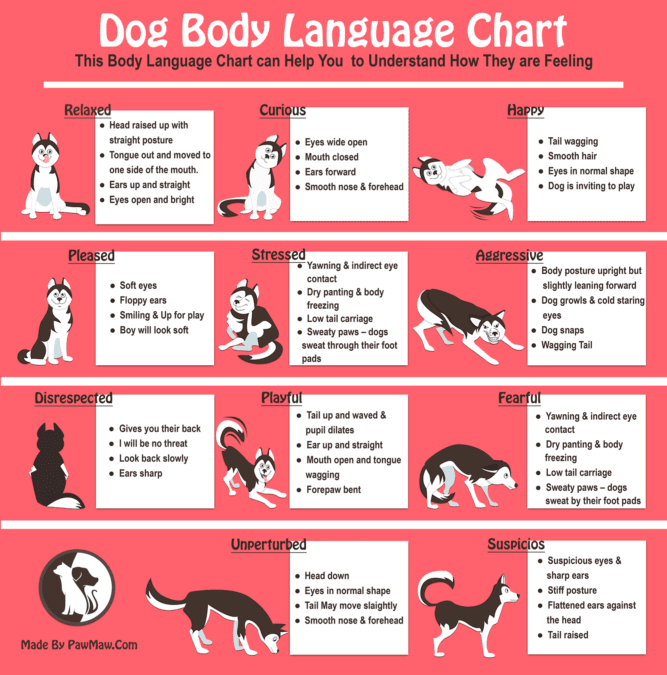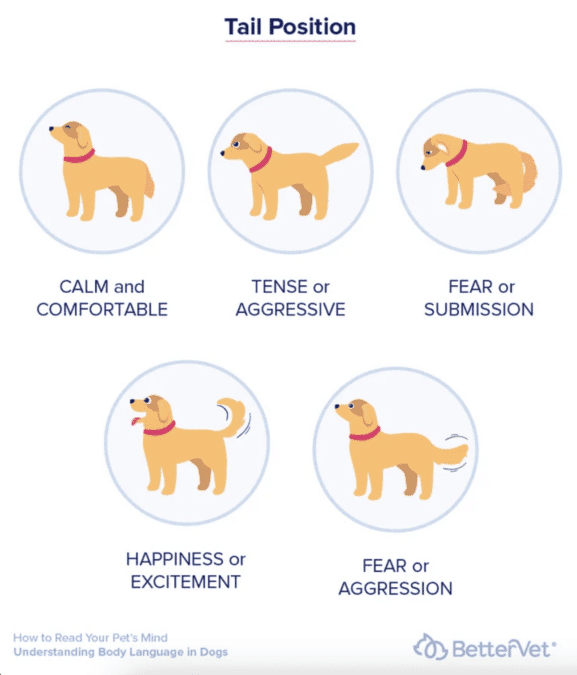Understanding how animals communicate without using words is important for pet owners. Dogs, especially, show many behaviors that tell us about their feelings.
A dog’s tail tells us a lot about its mood and it’s not only for balancing; it’s also how dogs talk to each other. Carol Erickson from the Pennsylvania SPCA says that while we often think a wagging tail means a dog is happy, it can also mean they’re nervous.
- If a dog’s tail is wagging high, it’s usually feeling good. But if the tail is tucked between the legs while wagging, it means the dog may be scared. Other signs of distress include shaking, pacing, and ears flattened in the dog’s head.
- When a dog is curious, its ears point up, its eyes focused, and its tail sticks straight out.
- During playtime, a dog might stretch its body into a low bow while its tail shakes.
- If a dog’s tail arches high over its back, it might be feeling aggressive.
Erickson says it’s essential to look at the whole body, not just the tail, to understand how a dog feels.
Tail Talk: Decoding Your Dog’s Secret Language
Ever wonder what your dog is trying to tell you? Believe it or not, dogs communicate a lot through their body language, especially their tail! This guide will help you understand what your furry friend is saying with just a wag.
No More Confusion: Experts Explain Dog Body Language
Confused by your dog’s wagging tail? You’re not alone! Experts say a dog’s tail wags can actually mean different things. This article explains how to read your dog’s body language to understand their emotions.
Wagging Wisdom: Understanding Your Dog’s Body Language
Our dogs are our best friends, but sometimes it can be hard to know their thoughts or feelings. Unlike humans, they can’t talk to us with words. But that doesn’t mean they can’t communicate! Dogs actually tell us a lot about their emotions through their body language, especially their tails. This guide will help you become a doggy translator and understand what your furry friend is trying to say.
The Tail Wag: It’s More Than Just Balance: We all know that dogs wag their tails, but did you know it’s not just for balancing? A wagging tail is actually a dog’s way of communicating with humans and other dogs. By paying attention to how your dog wags its tail, you can learn a lot about its mood.
Tail Wags and What They Mean:
- Happy Hound: A high-wagging tail is usually a good sign! If your dog’s tail is held up high and wagging from side to side, it’s likely to feel happy and excited. This is a classic sign that your pup is having a good time and enjoying your company.
- Nervous Nelly: Not all wags are created equal! Sometimes, a wagging tail can actually mean a dog is feeling nervous or unsure. If your dog’s tail is tucked between its legs while wagging, it might be feeling scared or shy. This is a good time to offer some reassurance and let your dog know it’s safe.
Beyond the Wag: Other Signs to Watch For:
While the tail is a great indicator of a dog’s mood, it’s important to look at the whole body to get the full picture. Here are some other signs to watch for:
- Shaking and Pacing: These can be signs that your dog is feeling anxious or stressed.
- Flattened Ears: Ears that lie flat against the head can also indicate fear or anxiety.
- Curious Canine: If your dog’s ears are perked up, its eyes are focused, and its tail is sticking straight out, it’s probably curious about something. This is a good time to introduce a new toy or explore a new place together.
- Playful Pup: During playtime, your dog might stretch its body low to the ground in a “play bow” position, while its tail wags excitedly. This is an invitation to join in on the fun!
- Aggressive Alert: If your dog’s tail arches high over its back and its fur stands on end, it might be feeling threatened or aggressive. It’s important to remove yourself from the situation and avoid making eye contact.
From The Club
Who doesn’t want to be a better fur parent? Remember, we can build a stronger bond with our dogs by observing and decoding their actions. We can misunderstand their body language so it’s important to consult with our dog’s veterinarians. By understanding their body language, we’ll understand their needs and emotions better and provide the love and support they need.


